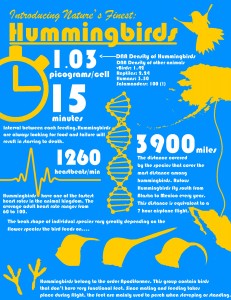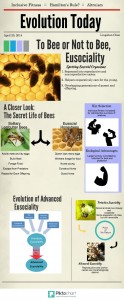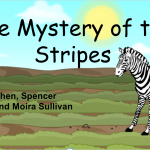Contributed by George Yang, Carl Dalmeus, and Alan Kwan
“Survival of the fittest”. The saying is used everywhere – in sports, academics, commercials, and other cultural norms. Society paints the image that the most successful people are at their physical and mental peak and have been that way since the beginning. So when survival of the fittest is mentioned in evolutionary science, many people make the common mistake of believing the fastest, biggest, and strongest organisms are the ones that survive in nature. Instead, fitness is the ability for an organism to not only survive in its environment but also successfully reproduce in the future. When facing natural selection, species may find that maintaining large morphological structures may not be the evolutionarily beneficial decision.
When people hear about giraffes, one of the first things they think of is probably their necks. Giraffes are the tallest living land animals on the planet and well-known for their long necks that stretch high over the savannas of Africa. But why exactly are the necks of giraffes so long? The most common explanation that dates back to as early as the start of the 19th century is that giraffes use their long necks to help them browse above the canopy for vegetation, which gives them an advantage over members of the same and different species. Later research found other explanations such as sexual selection (male-male combat and attracting female giraffes), increased vigilance (able to see predators from further away), and thermoregulation (increased surface area allows for greater cooling ability). For more information on a few of these hypotheses, see another recent post.
However, there are also costs associated with the long necks of giraffes. Despite having long necks, giraffes actually reach optimal feeding when their necks are bent and have the tendency to feed from low shrubs particularly during dry seasons. Longer necks would also result in enlargement of the heart, thickening of the artery walls, and higher blood pressure in order to push blood into the brain. Therefore, maintaining longer necks may be an unnecessary expenditure of energy. In addition, research suggests that giraffes with longer necks stick out from the crowd and are more likely to be subject to predation.
The long necks of giraffes is just one of many examples in nature illustrating that there are costs and benefits to most adaptations. The idea that natural selection produces perfect organisms with perfectly advantageous adaptations is just a tall tale.
For more information about the costs of selection in giraffes and other organisms, please refer to the below articles:
Cameron, E.Z. & J.T. du Troit. 2007. Winning by a neck: tall giraffes avoid competing with shorter browsers. American Naturalist 169: 130-135.
Englemoer, D.J.P., Donaldson, I., & D.E. Rozen. 2013. Conservative Sex and the Benefits of Transformation in Streptococcus pneumoniae. PLoS Pathogens 9.
Kusche, H. & A. Meyer. 2014. One cost of being gold: selective predation and implications for the maintenance of the Midas cichlid colour polymorphism (Perciformes: Cichlidae). Biological Journal of the Linnean Society 111: 350-358.
Liker, A. & T. Szekely. 2005. Mortality costs of sexual selection and parental care in natural populations of birds. Evolution 59: 890-897.
Mougeotf, F. & V. Bretagnollef. 2000. Predation as a cost of sexual communication in nocturnal seabirds: an experimental approach using acoustic signals. Animal Behavior 60: 647–656.
Simmons, R.E. & L. Scheepers. 1996. Winning by a neck: sexual selection in the evolution of giraffe. American Naturalist 148: 771-786.
Wilkinson, D.M. & G.D. Ruxton. 2012. Understanding selection for long necks in different taxa. Biological Reviews 87: 616-630.



